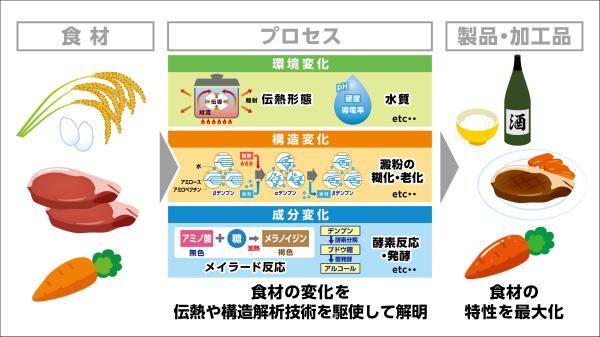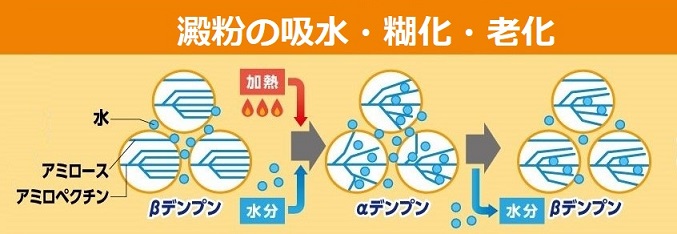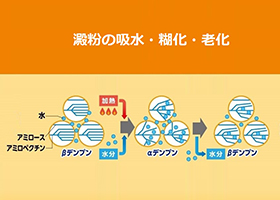Food science
Development of Evaluation Methods for Food Cooking and Manufacturing Processes
Overview
Foods change their appearance greatly during their cooking or manufacturing process. In the food cooking and manufacturing processes, critical factors are changes in the foodstuff. The Food Science Laboratory clarifies such changes, utilizing heat transfer and structural analysis technologies. In addition, the laboratory applies the findings to develop new food analysis techniques and control food cooking and manufacturing. By doing so, it aims to make the most of the characteristics of foodstuff.
Research example: Visualization of changes in rice cooking process
Rice is primarily composed of starch. The key to stabilizing the quality of cooked rice is to control the structural change of starch during the rice cooking process.
The appearance and physical properties of starch greatly change by three phenomena of water absorption, gelatinization, and aging and affect the taste of the rice. The laboratory has developed techniques to visualize and quantify these phenomena because elucidating the mechanisms underlying these phenomena and being able to evaluate them more precisely are very important not only for improving taste but also for improving productivity and stabilizing production.

Research Concept
Research example: Visualization of water absorption state of rice grains
Uncooked rice has a nondigestible crystalline starch structure. By immersing rice in water to allow it to absorb water deep inside the grains and by heating, the crystalline structure changes and becomes digestible. Water absorption is an important step in cooking rice with a well-cooked center. The laboratory has developed a new technology to visualize and quantify the water absorption condition. The technology has enabled us to obtain a lot of knowledge about the factors that affect the water absorption condition, such as the effects of rice varieties and water temperature during soaking.

Structural changes of starch during cooking and manufacturing
Future Plans
Drawing on the findings acquired through research and using new analytical techniques, as in the example of rice, the Food Science Laboratory will propose a wide range of solutions to customers in food-related industries.
→ Food Science Laboratory page
Related contents
TAG SEARCH
- Evolving residential gas appliances
- Evolving residential gas appliances Water heaters, space heaters, dryers Cooking appliances Smart Equipment Fuel Cell systems
- Evolving commercial and industrial gas appliances
- Evolving commercial and industrial gas appliances Cogeneration (CHP) units Air conditioning systems, kitchen appliances Bio, water treatment Industrial furnaces, burners Energy management, IoT
- Enhancing the safety and economic efficiency of LNG regasification
- Enhancing the safety and economic efficiency of LNG regasification Utilization of cold energy Plant materials Power generation technology
- Developing next-generation businesses through enterprising initiatives
- Developing next-generation businesses through enterprising initiatives Materials development Measurement Simulation, data analysis Food science Material evaluation
- Contributing to conserving the environment and achieving a carbon neutral society
- Contributing to conserving the environment and achieving a carbon neutral society Methanation Hydrogen, ammonia Biogas Energy management Renewable Energy
- Technologies of Group companies
- KRI, Inc. Osaka Gas Chemicals Group OGIS-RI Group

